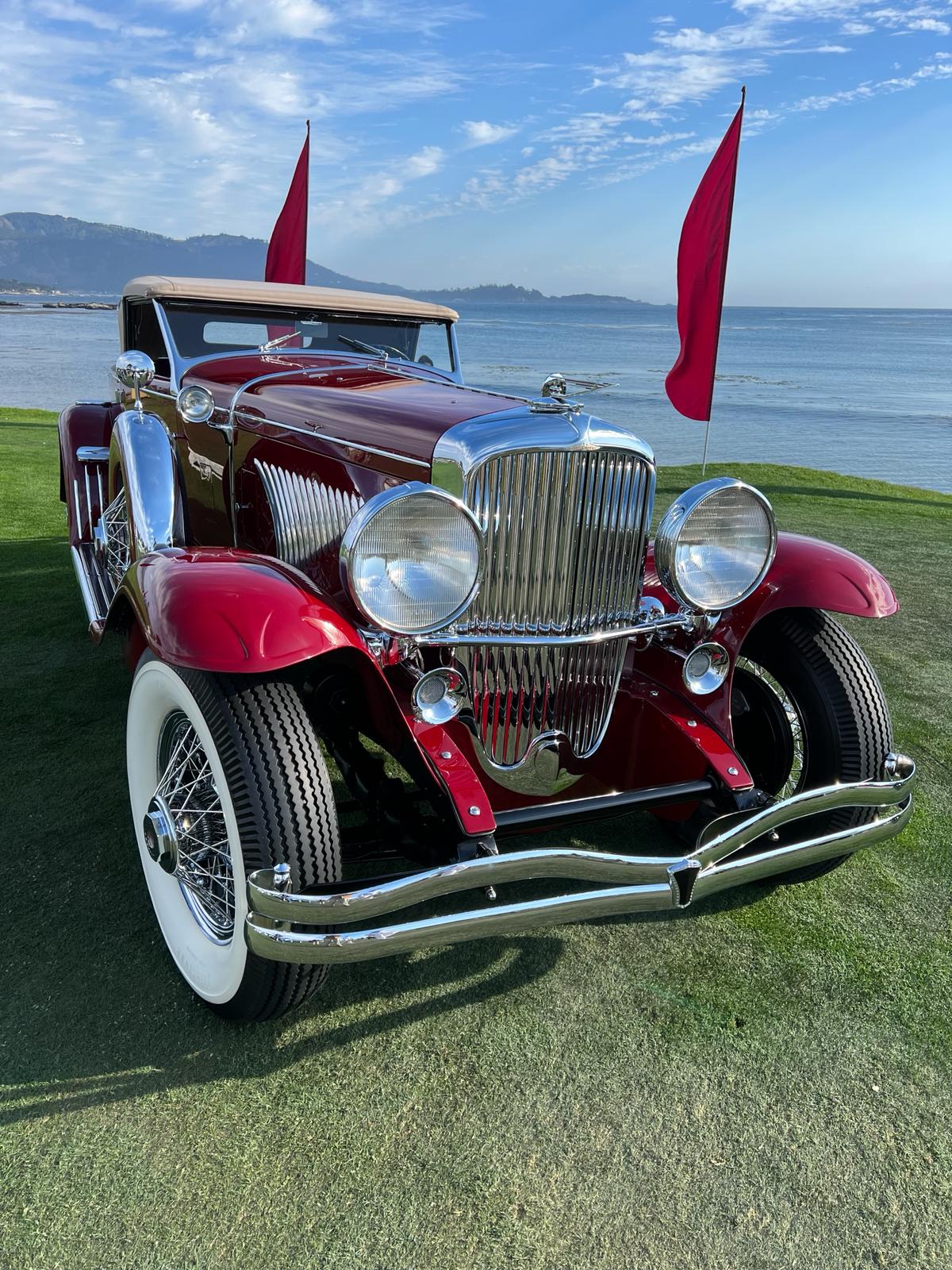Kip Cyprus & Cadillac Eldorado Biarritz

“This is a 1960 Cadillac Eldorado Biarritz convertible. This car has a lot of resemblance to the front—it’s almost identical to a ’59. You’re either a ’59 or a ’60 guy. The ’59 would have had the higher taillights, the fighter-pilot taillights in the back, and then the ’60 had a little lower light. The Cadillac Eldorado Biarritz is interesting because if you look at the front and see the grill, and then you walk to the back of it, you’ll see the same grill with the bullets on it. It also has a kind of a hockey stripe stainless steel side trim. Instead of having a molding dead center down the middle of it, it had more of a stylish trim that echoed back and forth from the front to the back”, says Kip Cyprus.

Kip Cyprus continues; “The tail is distinctive; nothing stands out like the tail of this car. You don’t know whether it’s coming or going, actually. If I had to guess, it’s really close to 19 feet…This is the end of the air ride, so General Motors started working with air ride and airbags in the mid-late 50s. The car actually rides on two airbags—similar to what we do today with more modern pro street cars, trying to run on airbags. General Motors began it, and it’s really interesting the way they did it. Its kind of like the way a toilet works; when the toilet fills up with water, the valve on the toilet fills up, shuts the valve off when it gets a certain level. This car is the same kind of way. There’s a right height adjustment, and when the car is too low, it adds air, and when it’s too high, it lets it out…the way it operates is off a power steering pump that produces air, goes into an accumulator tank, fills up, charges, and then pushes air to all the valves. As long as the valves are at the right height, there’s a blow-by. When they’re not, it lets air in.”

Kip Cyprus considers this a luxury performance car. “When they had all the high-rises with penthouses before public transportation became popular, they would drive these big luxury cars. In those apartment buildings, when you went into them, you almost had to duck your head; they were really low. It wasn’t like a parking structure today with a lot of height. So, these cars would wind up at the bottom. The air ride system was so bad that it would always go flat on them, and they could never get the cars, when they’re all the way down, you can’t even turn the wheels without bending the fenders. It’s a terrible design. So, the cars would wind up at the bottom, and they’d get a tow truck down there to get them out. Public transportation came along, and the cars were just left down there and forgotten. So, you think, ‘Okay, we’re on the East Coast where it’s moisture and it’s always snowing, it’s cold, and that’s where all the cars would rust out.’ You never want to buy a car from New York City. Typically, you want to go to Arizona or California for rust-free cars. However, most of these survived out of New York City because they were down in those buildings, and those buildings were kept hot. They had boilers that kept the whole building hot, so those cars were always in an oven and dry as can be. That’s what saved a lot of these cars.”












